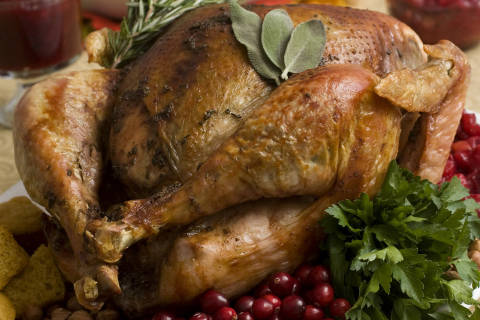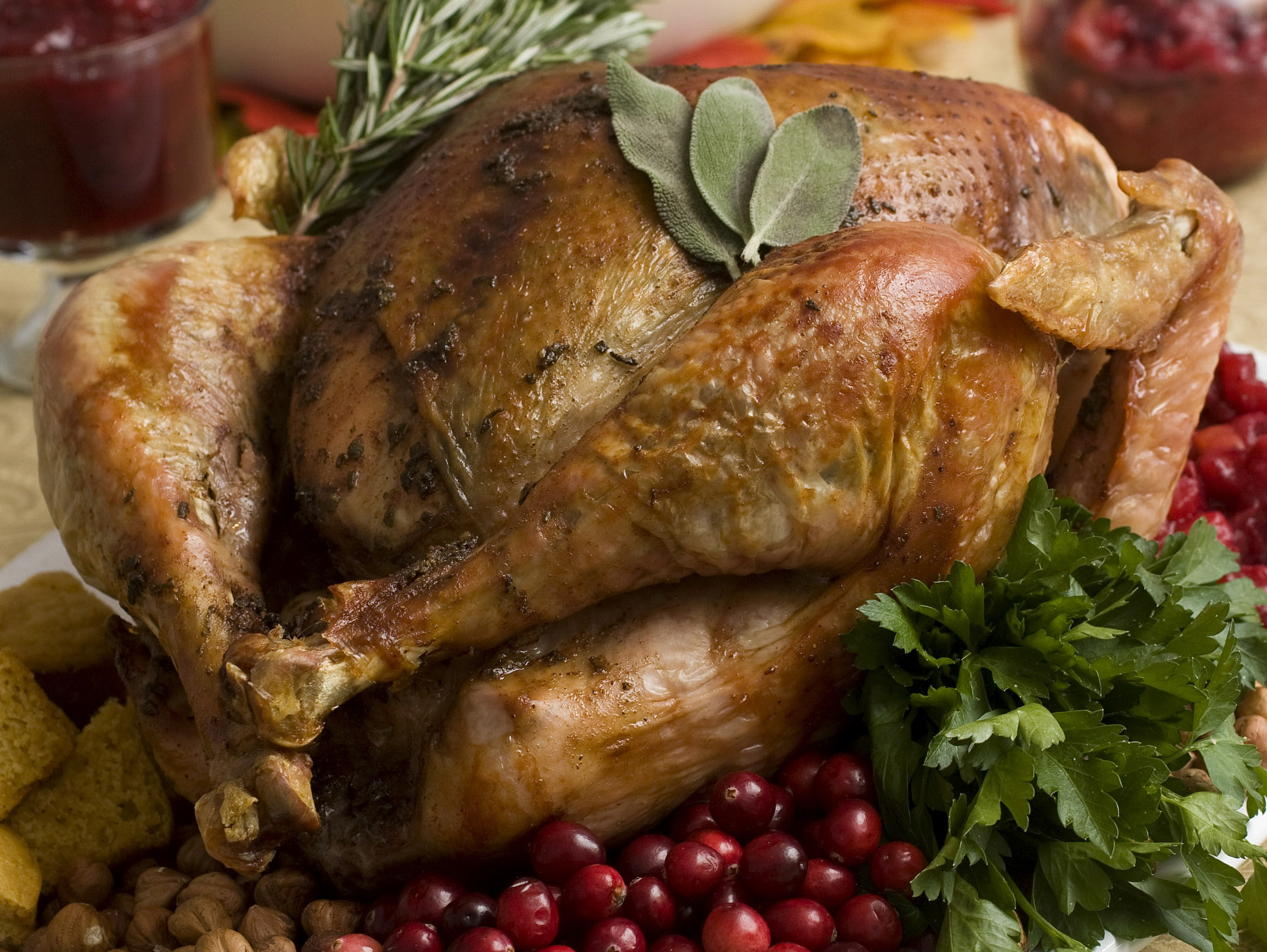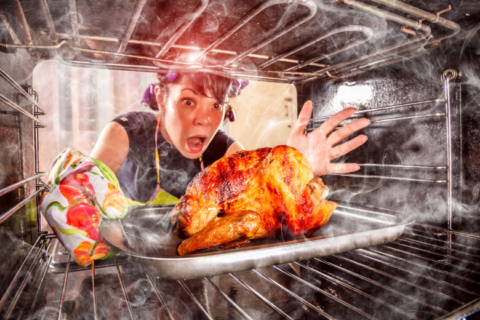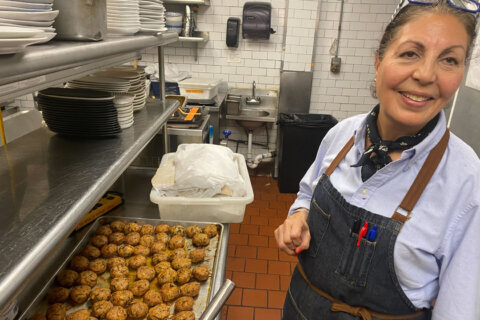
A lot can make Thanksgiving go right: The Macy’s Day Parade on the TV, the roasting turkey aroma wafting through the house, the tradition of fighting over the last drumstick and the belly (too) full of pumpkin pie. But it only takes one innocent misstep to make the holiday go very wrong. All you need to do is serve up a Thanksgiving feast that leaves your guests with food poisoning on Black Friday. Here are five common food safety mistakes that can sicken your guests — and how to avoid them:
Mistake No. 1: You wait until the last minute to thaw the frozen turkey.
If you’re like me, you bought the turkey on sale weeks ago, so you may have forgotten that it’s hibernating in the freezer. Put a note on your smartphone calendar to remind you to yank it out of the deep freeze in plenty of time for it to thaw properly in the refrigerator. Thaw the turkey in its original wrapper in a big pan on the bottom of your refrigerator so that the juices don’t contaminate any nearby foods.
According to the U.S. Department of Agriculture, it will take 24 hours for every 4 to 5 pounds of turkey to thaw in the refrigerator. (Read: If you’re planning to serve the whole neighborhood, you’ll really need to think ahead). Here’s a nifty chart to help you:
| Weight of frozen turkey | Length of time to defrost in refrigerator |
| 4 to 12 pounds | 1 to 3 days |
| 12 to 16 pounds | 3 to 4 days |
| 16 to 20 pounds | 4 to 5 days |
| 20 to 24 pounds | 5 to 6 days |
Mistake No. 2: You give the bird a bath.
I know, I know — Julia Child washed her poultry under running water in the kitchen sink before she started her gourmet dinner. Gosh knows I can’t hold a candle to Julia’s culinary wisdom, but I have science on my side with this one. While the Food and Drug Administration reports that 68 percent of consumers wash whole chickens and turkeys before cooking them, this cooking lore is not healthy since it can potentially contaminate both your sink and the area around it. Research tells us that bacteria-laden water splashing from the bird bath can travel more than 2 feet in either direction of your sink, cross-contaminating the area. This creates a petri dish-like environment where pathogens that can cause food poisoning can multiply and contaminate your food prep area.
[See: Should I Wash the Turkey Before Cooking It?]
The one exception is if you are brining your turkey. In this case, a rinse is a culinary necessity to remove the excess brine before the bird goes in the oven. The best way to do this is to remove everything around the sink, including sponges and the drain board, and then cover the surrounding countertop area with paper towels. Move the roasting pan next to sink, gingerly rinse the turkey in slow, running water to minimize splashing, and then transfer the turkey to the pan. Throw away the paper towels and clean the entire sink area with hot soapy water.
Mistake No. 3: You eyeball when the turkey is ready.
I know your grandmother was able to look and smell the turkey to intuitively know when it was done. But times have changed and it’s no longer reliable to use your eyes to assess the color and texture of the turkey to determine if it is done. You need to use a food thermometer. The USDA recommends poking the thermometer in the innermost part of the thigh and wing, as well as the thickest part of the breast, until they all reach a safe temperature of 165 degrees F. Also, if your thermometer runs on batteries, make sure you have a backup pair available.
[See: 9 Cooking Tricks That Will Make Everyone Think You’re a Great Chef.]
Mistake No. 4: You stuff the turkey.
We have all grown up with the turkey being stuffed, but let’s also break with tradition on this one. Bacteria inside the cavity of the bird can survive in the stuffing unless both the stuffing and turkey reach an internal temperature of 165 degrees F. This can be very tricky to coordinate so that neither ends up being overcooked or under-cooked. It is safer to bake the stuffing in a covered casserole dish outside the bird. Good news: The turkey will take less time to cook if it isn’t stuffed, so you won’t have to get up at the crack of dawn to put it in the oven.
[See: 10 Ways to Get Over Food Poisoning.]
Mistake No. 5: You admire the turkey all day.
I know it’s a beautiful sight, but leaving any traces of Thanksgiving dinner, including the side dishes, at room temperature for more than two hours will increase the chances of bacteria growing to levels that can make you sick. Refrigerate leftovers immediately. Take a picture of your Thanksgiving dinner on your smartphone camera if you want to safely keep looking at it throughout the day — and beyond.
More from U.S. News
Holiday Vices: How to Have Fun Without Overdoing It
Healthy Holiday Desserts and Snacks
7 Healthy Ways to Deal With Working Over the Holidays
5 Food Safety Sins Too Many Home Chefs Will Commit This Thanksgiving originally appeared on usnews.com









